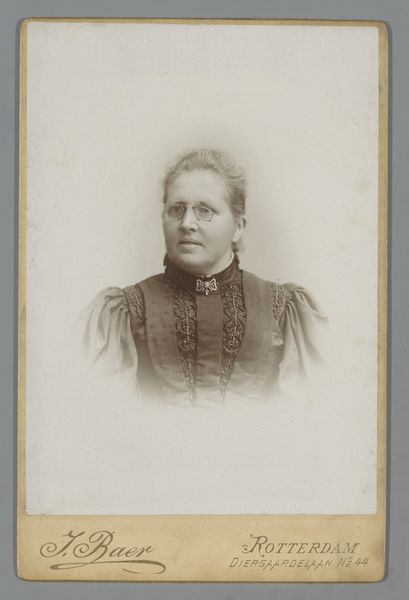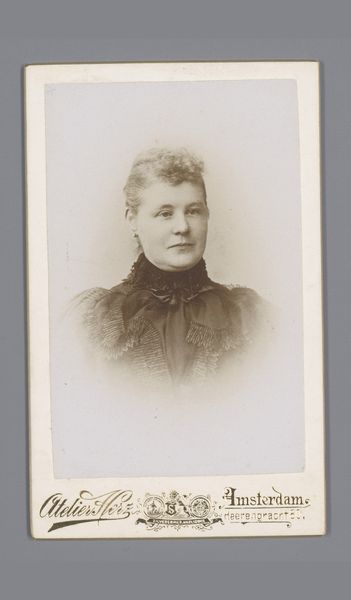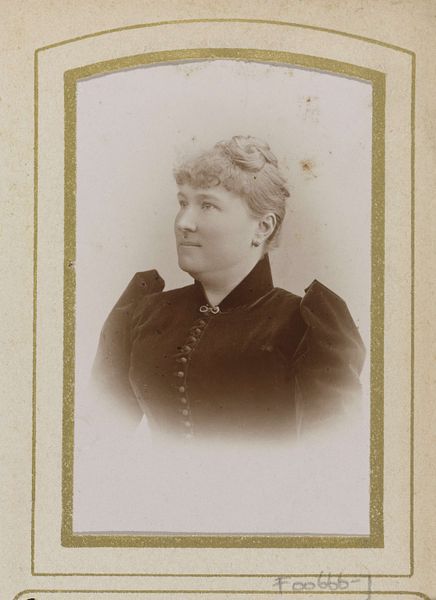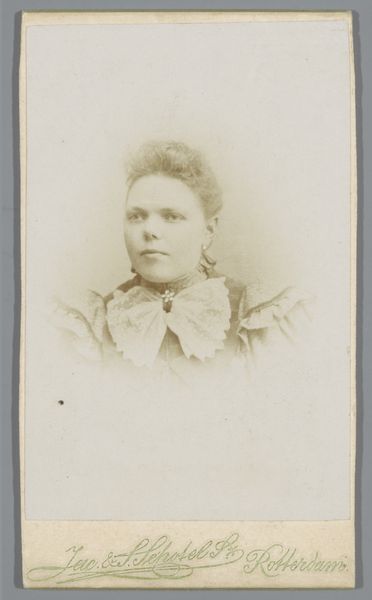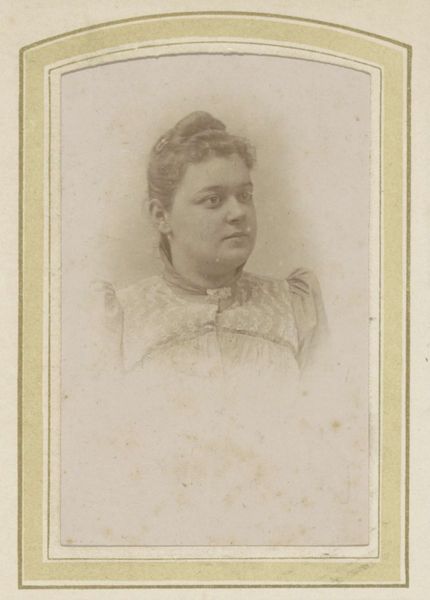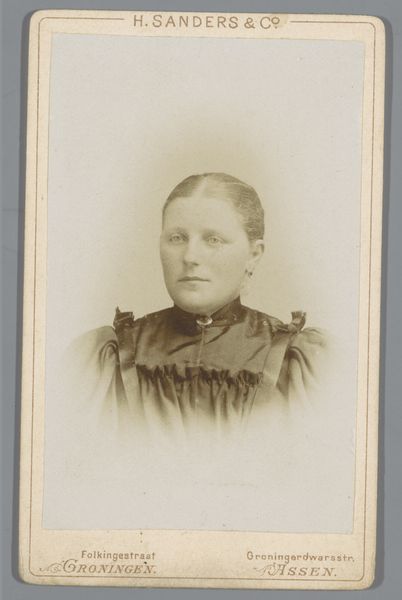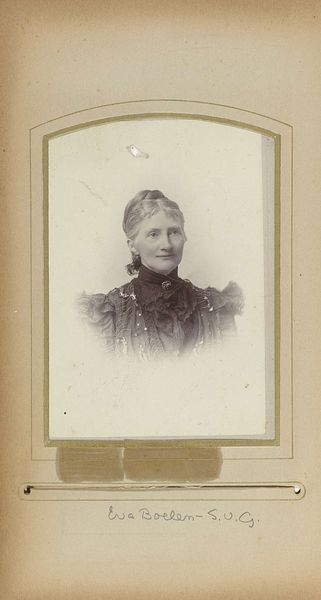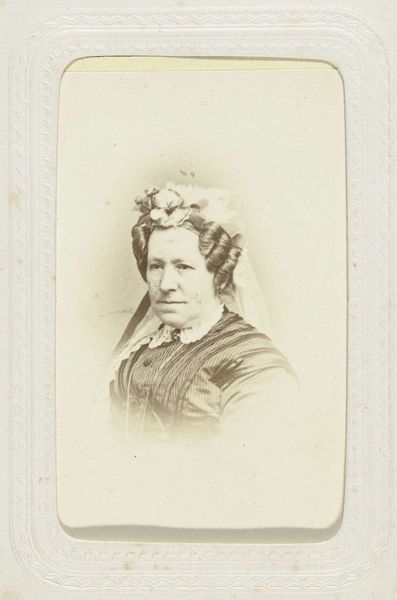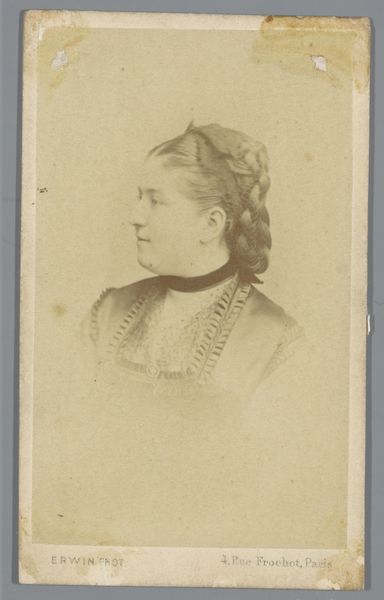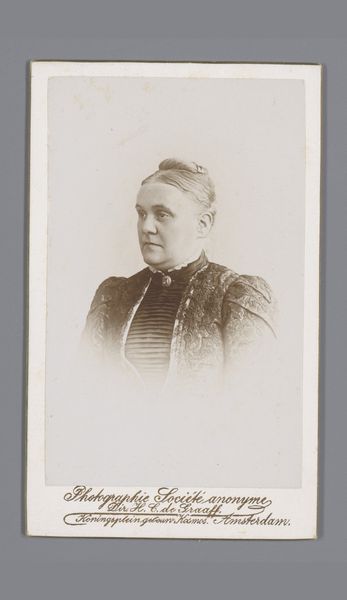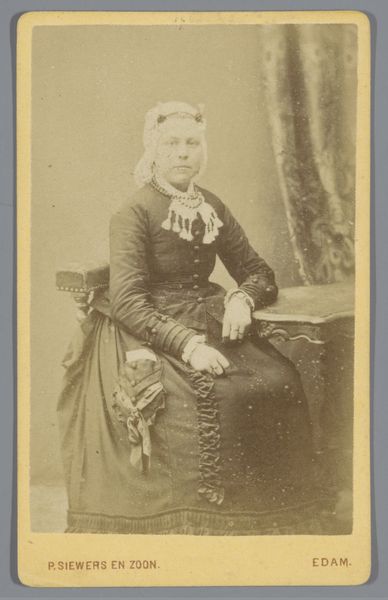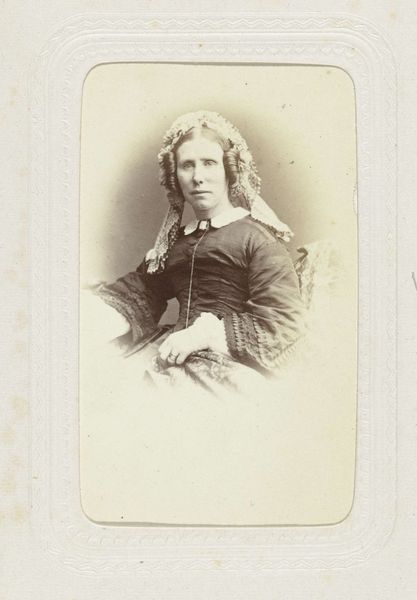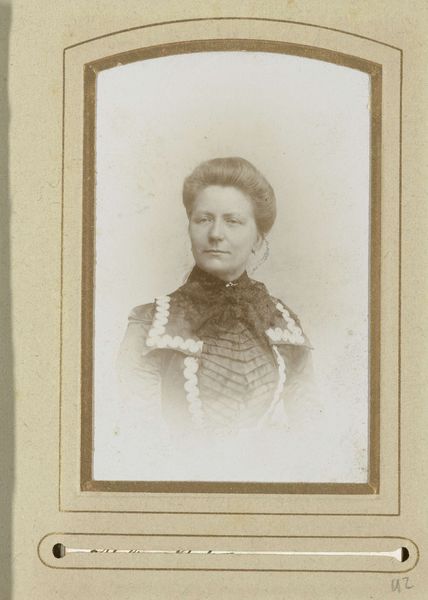
Portret van een vrouw met opgestoken haar, vermoedelijk een Française c. 1899
0:00
0:00
delizy
Rijksmuseum
Dimensions: height 91 mm, width 55 mm
Copyright: Rijks Museum: Open Domain
This small photographic print, likely made in the late 19th century by an artist named Delizy, portrays a woman with an elaborate updo. The photographic process itself is key here. It relies on a complex interplay of chemistry, optics, and labor. Light-sensitive materials, often involving silver compounds, are carefully prepared and exposed to create a latent image. This image is then developed, fixed, and printed, all requiring skilled technicians and specialized equipment. Consider the context of this portrait. The rise of photography in the 19th century democratized image-making, but it also created new forms of labor and consumption. Studios like Delizy’s were part of a burgeoning industry, employing photographers, assistants, and retouchers. Each portrait involved not only the sitter's time and money but also the labor of these often-unseen workers. By recognizing the amount of labor that goes into it, photography's seemingly mechanical reproduction reveals complex social and economic dynamics.
Comments
No comments
Be the first to comment and join the conversation on the ultimate creative platform.
